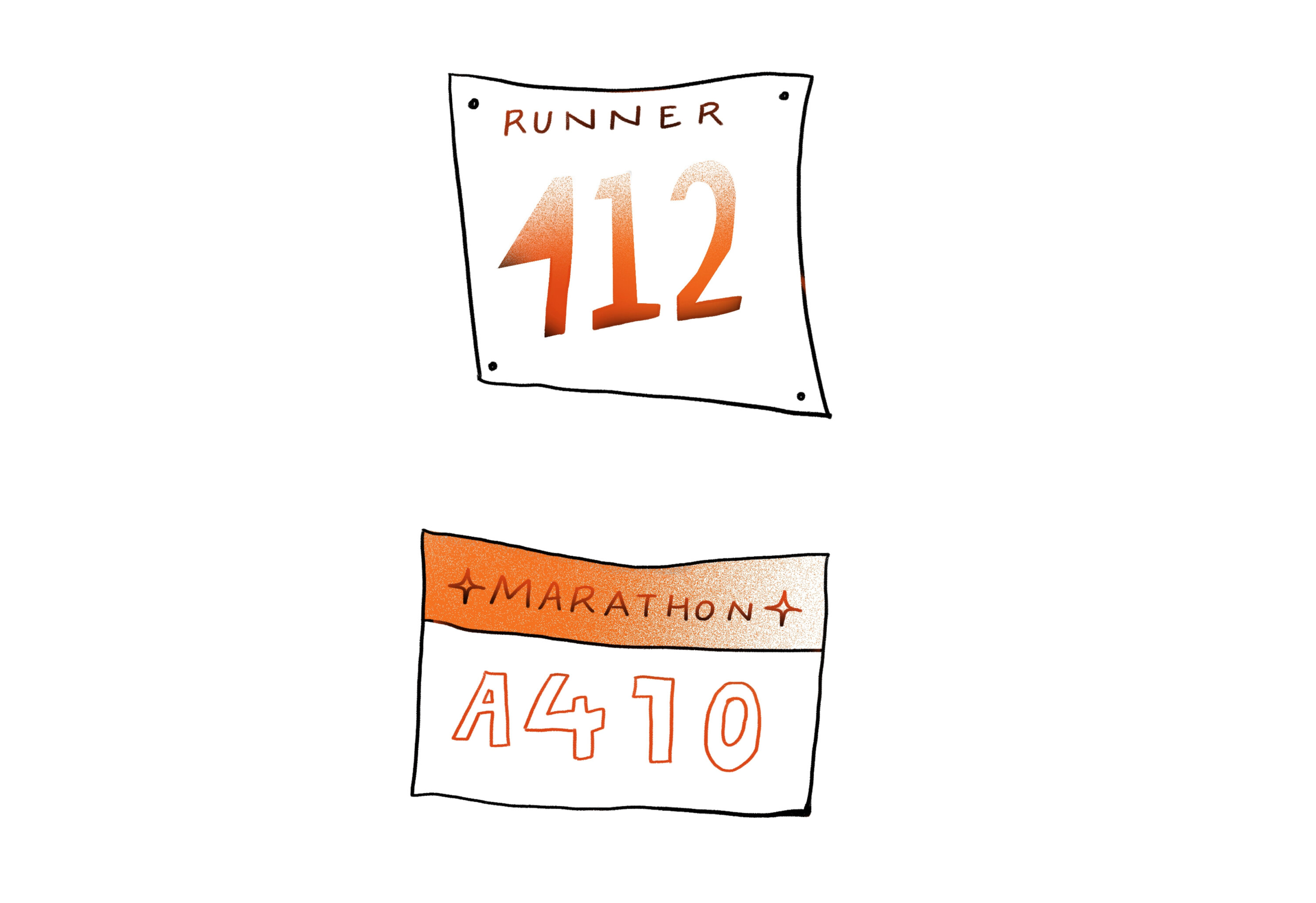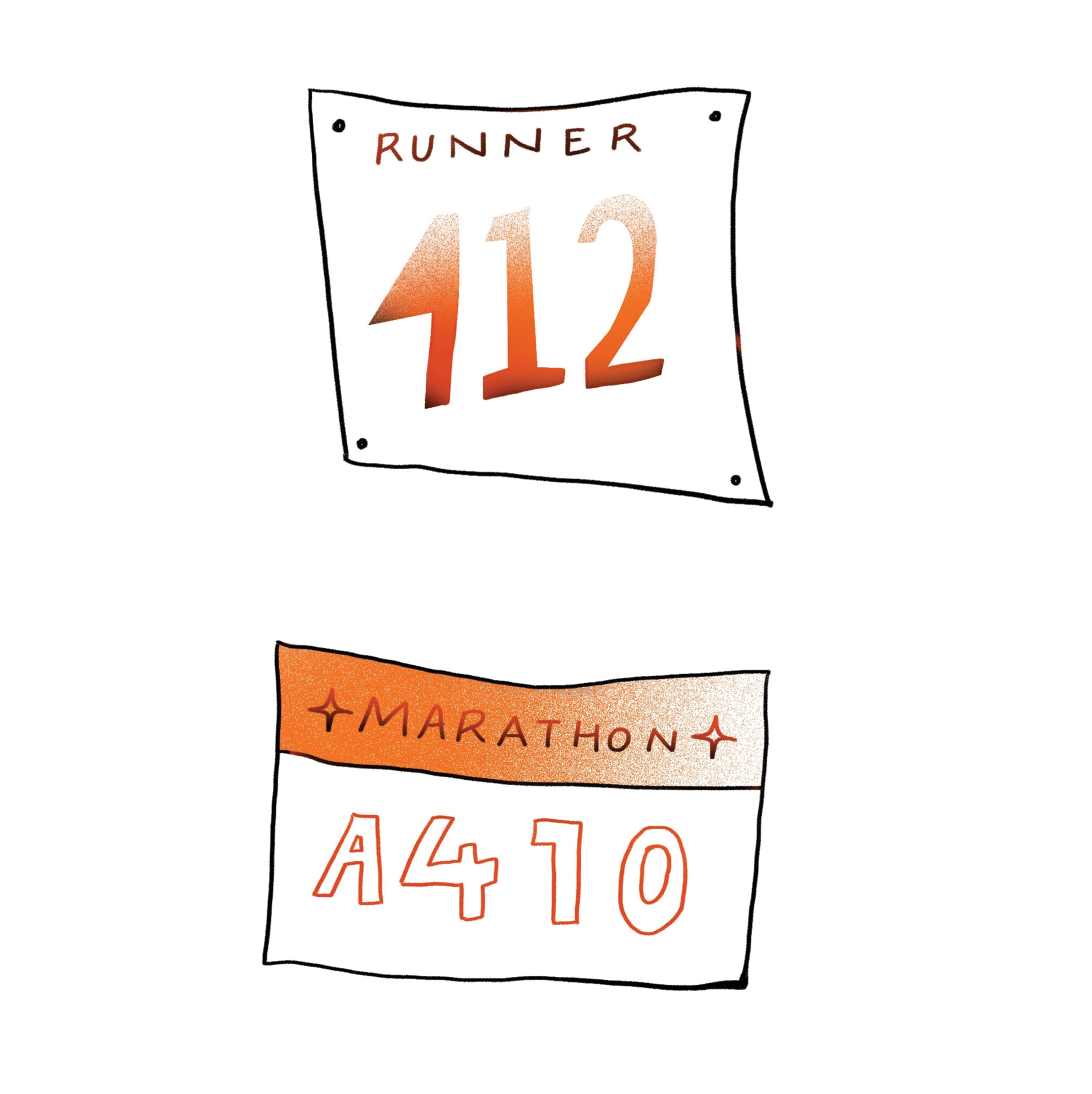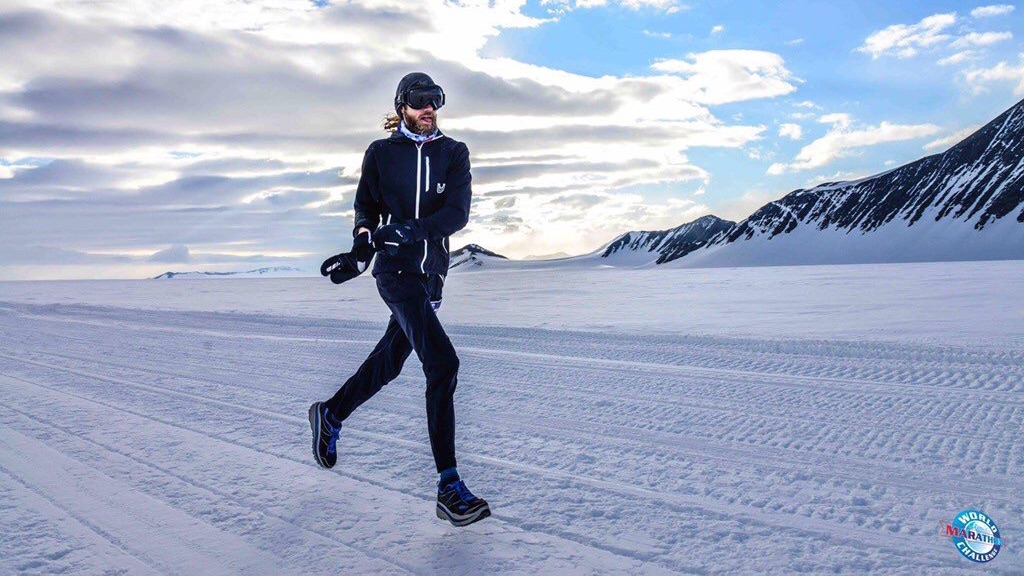Contents

Mahogany Blank wasn’t always a serious runner. Though she ran cross-country at her Southern California high school, she admits she “didn’t take it very seriously” and instead pursued cheerleading as a student at the University of California, Riverside. Blank didn’t take up the sport again until after she moved to DC, when she was introduced to a running club in 2017.
That’s all to say she’s familiar with the stumbles associated with being new to running. In the past seven years, the 31-year-old has completed feats including the Speed Project, a relay—considered among the hardest in the world—in which teams race the 340 miles from Los Angeles to Las Vegas, and the Chocolate City Relay, an unsanctioned, community-run event that spans all eight of DC’s wards. In her spare time, the Road Runners of America–certified trainer coaches athletes with varying goals, from finishing a 5K to completing an ultramarathon. Here are her tips for running glory.
1.
Back to TopGet the Right Gear—but Don’t Overbuy
“I am a coach that tries not to force people to buy a bunch of gear,” Blank says, “but I have seen the benefit of switching over to a shoe that’s better-fitting for my foot.” Blank says it’s worth it to head to a running store—Fleet Feet and Pacers are two good locally owned shops—to get fitted by an expert.
She also suggests investing in socks—“I didn’t know how important socks were until I got my first blister”—and a handheld water bottle. Skip the rest until you know you’ll stick with the sport.
Back to Top
2.
Back to TopTake It Slow
Runners can become obsessed with notching PRs (athletic parlance for personal records) and going fast. Blank urges clients not to focus solely on pace—especially when just starting out.
When a client kept mentioning that she’d “die” after each run, Blank asked about her speed. “She said, ‘Well, I just go as fast as I can,’ ” Blank recalls. “One of the first things I worked on with her was going really slow.” Read: It’s better to hold a 13-minute pace for ten minutes than an eight-minute pace for two.
Back to Top
3.
Back to TopDo “Prehab”
During treatment for a hamstring injury—which forced Blank to stop running for nine months—a doctor told her the injury occurred because parts of her legs were weaker than others. “You should be strength-training two to three times a week,” she says. “I didn’t know that.”
Now Blank advises clients to do what she calls prehab—measures to avoid injury. These include stretching—leg swings, hamstring scoops, butt kicks—and exercises to strengthen all areas of the body, such as front and reverse lunges, shoulder presses, and planks.
Back to Top
4.
Back to TopSet Your Own Pace
Run clubs are excellent resources for newbies, but Blank urges those who start the journey with others to remember one thing: “Run your pace. The minute you start running someone else’s, that’s when injuries occur and exhaustion sets in.”
How do you know what your pace is, exactly? Blank says that for 70 to 80 percent of your runs, you should be able to converse easily.
Back to Top
5.
Back to TopWalk Before You Run
Your first run might not even be, well, a run. If you’re new to exercise or running, Blank suggests your first outing be a walk. If that feels good, after about five minutes, try intervals of a two-minute run followed by a one-minute walk, alternating for 20 minutes.
“What tends to happen with new runners is they get into it and do really high-volume days,” she explains, but this can lead to injuries and overexertion.
By the Numbers
42
Number of years that local running legend Al Richmond ran the Marine Corps Marathon, from its founding in 1976 to 2017
2,000
Approximate number of Marines who volunteer each fall during the Marine Corps Marathon
30
The most marathons in a year that Marylander Barry Goldmeier has run across the country while juggling
1,838
Number of streets that Dion Thompson-Davoli covered on his mission to trek every road in the District
50
Number of days that ultramarathoner Michael Wardian of Arlington set as a goal to run the length of the 2,178-mile-long Appalachian Trail
26:33
Finishing time of Rosie, Michael Wardian’s dog, in the Arlington Turkey Trot 5K. We’ll spare you the math: That’s about 8:32 minutes per mile.
Expert Tips
On Setting Goals
Notable locals who love to run share their secrets for perfect strides

“Find that person who is going to hold you accountable. You’re going to look forward to getting together, sweating together, laughing, and literally crying because of how hard that run was. Sharing this range of emotions together is the answer to getting out there on a consistent basis.”
—Chris Farley, owner of Pacers Running
“[Running] that first time might not feel good, but you’re going to recover.And you’re going to be able to say, ‘Okay, maybe I can do a little bit more next time.’ ”
—Julie Culley, Olympic track-and-field athlete and former track coach at Georgetown University
“The goal isn’t the destination, the next step is. When you look at, like, the two-mile mark, and that’s your goal, you’re in trouble. The goal is just to keep running.”
—Nationals pitcher Jake Irvin
Back to Top
On Keeping At It

“If I go for an easy run, I like to listen to Finnish pop music and other songs that give me good vibes. If I go for a physically hard run, I don’t listen to anything. In this situation, I feel like music would distract me from focusing on my training.”
—Matti Peltola, DC United midfielder
““In my late twenties, I started to have terrible knee pain, which turned out to be an IT-band issue. But I got good advice: to keep exercising, but in other ways—like swimming—while it improved. And I tried different strategies to control it, which led to a new practice of never running two consecutive days. The problem went away and hasn’t returned since.”
—Pete Buttigieg, Secretary of Transportation
“The biggest thing is consistency. It’s better to do less and do it more consistently than to do more and not be able to recover. Don’t feel like you have to mirror what other people are doing.”
—Michael Wardian, Arlington ultramarathoner who ran across the US in 62 days
Back to Top
On Running a Marathon

“Many people say you must run at least 25 miles per week to prepare for a marathon. My theory is to increase monthly mileage by only 10 percent. You might think it takes too much time, but avoiding injury is the shortest way to make yourself ready for a race.”
—Shigeo Yamada, Japanese ambassador to the United States, who has run about ten marathons, including the Marine Corps
“It’s easy to go out hard for the first 10 or 15 miles in a marathon before it hits you that you’re not going to be able to run the whole thing at that pace. My biggest tip is to check in with your body every five miles. If you’re really hurting before you hit 18 or 20, you should slow down. You might lose a couple minutes, but that’s better than losing 10 or 15 minutes on the back end.”
—Elena Hayday, 2024 US Olympic marathon-trials participant
“The idea is to come and achieve. That’s why the marathon is a metaphor for so many things. Because it’s not about the actual execution. It’s the preparation that counts.”
—Alex Hetherington, Marine Corps Marathon race director

Mahogany Blank wasn’t always a serious runner. Though she ran cross-country at her Southern California high school, she admits she “didn’t take it very seriously” and instead pursued cheerleading as a student at the University of California, Riverside. Blank didn’t take up the sport again until after she moved to DC, when she was introduced to a running club in 2017.
That’s all to say she’s familiar with the stumbles associated with being new to running. In the past seven years, the 31-year-old has completed feats including the Speed Project, a relay—considered among the hardest in the world—in which teams race the 340 miles from Los Angeles to Las Vegas, and the Chocolate City Relay, an unsanctioned, community-run event that spans all eight of DC’s wards. In her spare time, the Road Runners of America–certified trainer coaches athletes with varying goals, from finishing a 5K to completing an ultramarathon. Here are her tips for running glory.
Back to Top1.
Back to TopGet the Right Gear—but Don’t Overbuy
“I am a coach that tries not to force people to buy a bunch of gear,” Blank says, “but I have seen the benefit of switching over to a shoe that’s better-fitting for my foot.” Blank says it’s worth it to head to a running store—Fleet Feet and Pacers are two good locally owned shops—to get fitted by an expert.
She also suggests investing in socks—“I didn’t know how important socks were until I got my first blister”—and a handheld water bottle. Skip the rest until you know you’ll stick with the sport.
Back to Top
2.
Back to TopTake It Slow
Runners can become obsessed with notching PRs (athletic parlance for personal records) and going fast. Blank urges clients not to focus solely on pace—especially when just starting out.
When a client kept mentioning that she’d “die” after each run, Blank asked about her speed. “She said, ‘Well, I just go as fast as I can,’ ” Blank recalls. “One of the first things I worked on with her was going really slow.” Read: It’s better to hold a 13-minute pace for ten minutes than an eight-minute pace for two.
Back to Top
3.
Back to TopDo “Prehab”
During treatment for a hamstring injury—which forced Blank to stop running for nine months—a doctor told her the injury occurred because parts of her legs were weaker than others. “You should be strength-training two to three times a week,” she says. “I didn’t know that.”
Now Blank advises clients to do what she calls prehab—measures to avoid injury. These include stretching—leg swings, hamstring scoops, butt kicks—and exercises to strengthen all areas of the body, such as front and reverse lunges, shoulder presses, and planks.
Back to Top
4.
Back to TopSet Your Own Pace
Run clubs are excellent resources for newbies, but Blank urges those who start the journey with others to remember one thing: “Run your pace. The minute you start running someone else’s, that’s when injuries occur and exhaustion sets in.”
How do you know what your pace is, exactly? Blank says that for 70 to 80 percent of your runs, you should be able to converse easily.
Back to Top
5.
Back to TopWalk Before You Run
Your first run might not even be, well, a run. If you’re new to exercise or running, Blank suggests your first outing be a walk. If that feels good, after about five minutes, try intervals of a two-minute run followed by a one-minute walk, alternating for 20 minutes.
“What tends to happen with new runners is they get into it and do really high-volume days,” she explains, but this can lead to injuries and overexertion.
By the Numbers
42
Number of years that local running legend Al Richmond ran the Marine Corps Marathon, from its founding in 1976 to 2017
2,000
Approximate number of Marines who volunteer each fall during the Marine Corps Marathon
30
The most marathons in a year that Marylander Barry Goldmeier has run across the country while juggling
1,838
Number of streets that Dion Thompson-Davoli covered on his mission to trek every road in the District
50
Number of days that ultramarathoner Michael Wardian of Arlington set as a goal to run the length of the 2,178-mile-long Appalachian Trail
26:33
Finishing time of Rosie, Michael Wardian’s dog, in the Arlington Turkey Trot 5K. We’ll spare you the math: That’s about 8:32 minutes per mile.
Expert Tips
Notable locals who love to run share their secrets for perfect strides
“Find that person who is going to hold you accountable. You’re going to look forward to getting together, sweating together, laughing, and literally crying because of how hard that run was. Sharing this range of emotions together is the answer to getting out there on a consistent basis.”
—Chris Farley, owner of Pacers Running
“If I go for an easy run, I like to listen to Finnish pop music and other songs that give me good vibes. If I go for a physically hard run, I don’t listen to anything. In this situation, I feel like music would distract me from focusing on my training.”
—Matti Peltola, DC United midfielder
“Many people say you must run at least 25 miles per week to prepare for a marathon. My theory is to increase monthly mileage by only 10 percent. You might think it takes too much time, but avoiding injury is the shortest way to make yourself ready for a race.”
—Shigeo Yamada, Japanese ambassador to the United States, who has run about ten marathons, including the Marine Corps
“[Running] that first time might not feel good, but you’re going to recover.And you’re going to be able to say, ‘Okay, maybe I can do a little bit more next time.’ ”
—Julie Culley, Olympic track-and-field athlete and former track coach at Georgetown University
““In my late twenties, I started to have terrible knee pain, which turned out to be an IT-band issue. But I got good advice: to keep exercising, but in other ways—like swimming—while it improved. And I tried different strategies to control it, which led to a new practice of never running two consecutive days. The problem went away and hasn’t returned since.”
—Pete Buttigieg, Secretary of Transportation
“It’s easy to go out hard for the first 10 or 15 miles in a marathon before it hits you that you’re not going to be able to run the whole thing at that pace. My biggest tip is to check in with your body every five miles. If you’re really hurting before you hit 18 or 20, you should slow down. You might lose a couple minutes, but that’s better than losing 10 or 15 minutes on the back end.”
—Elena Hayday, 2024 US Olympic marathon-trials participant
“The goal isn’t the destination, the next step is. When you look at, like, the two-mile mark, and that’s your goal, you’re in trouble. The goal is just to keep running.”
—Nationals pitcher Jake Irvin
“The biggest thing is consistency. It’s better to do less and do it more consistently than to do more and not be able to recover. Don’t feel like you have to mirror what other people are doing.”
—Michael Wardian, Arlington ultramarathoner who ran across the US in 62 days
“The idea is to come and achieve. That’s why the marathon is a metaphor for so many things. Because it’s not about the actual execution. It’s the preparation that counts.”
—Alex Hetherington, Marine Corps Marathon race director
This article appears in the October 2024 issue of Washingtonian.








